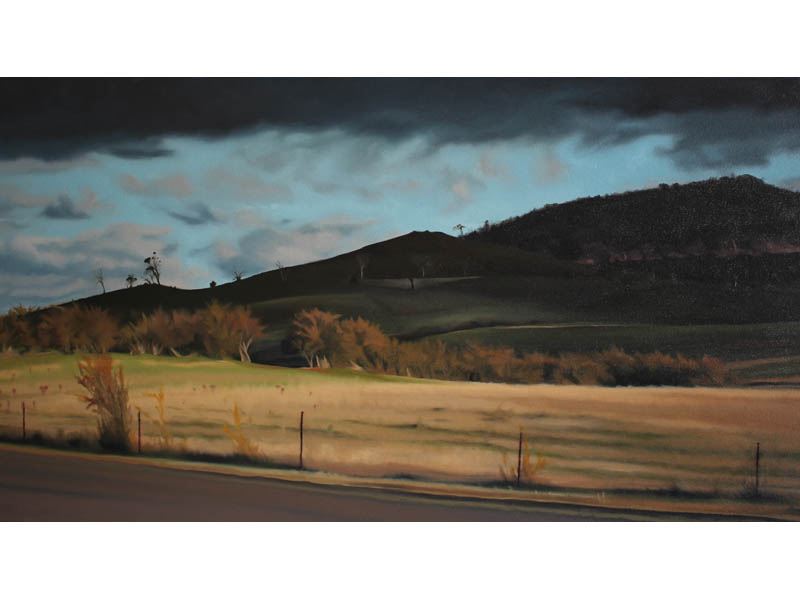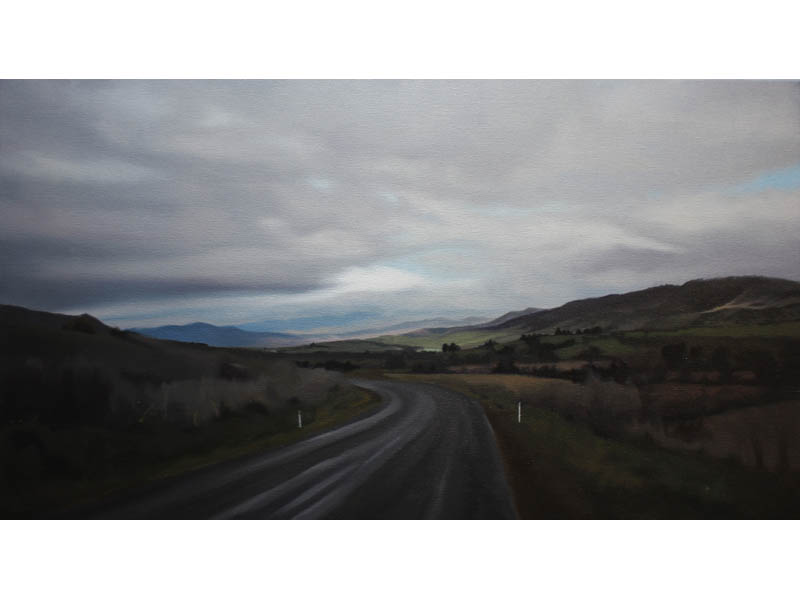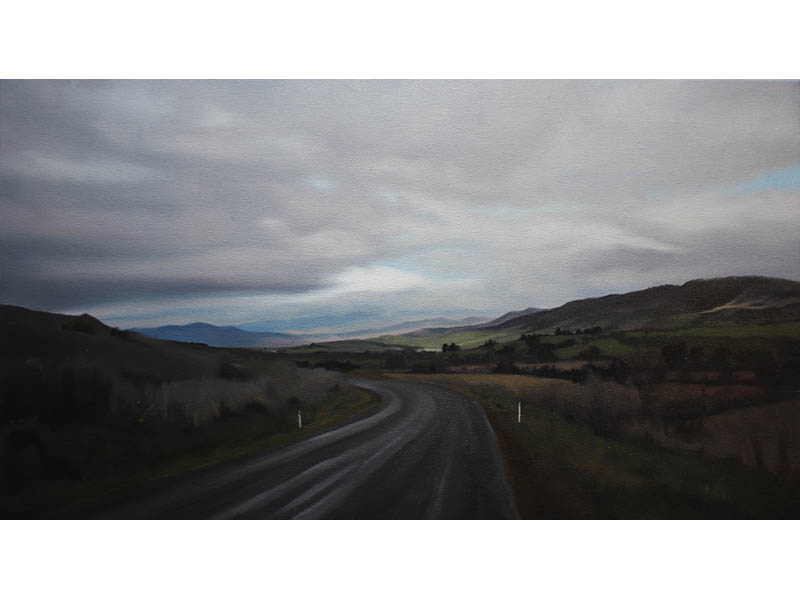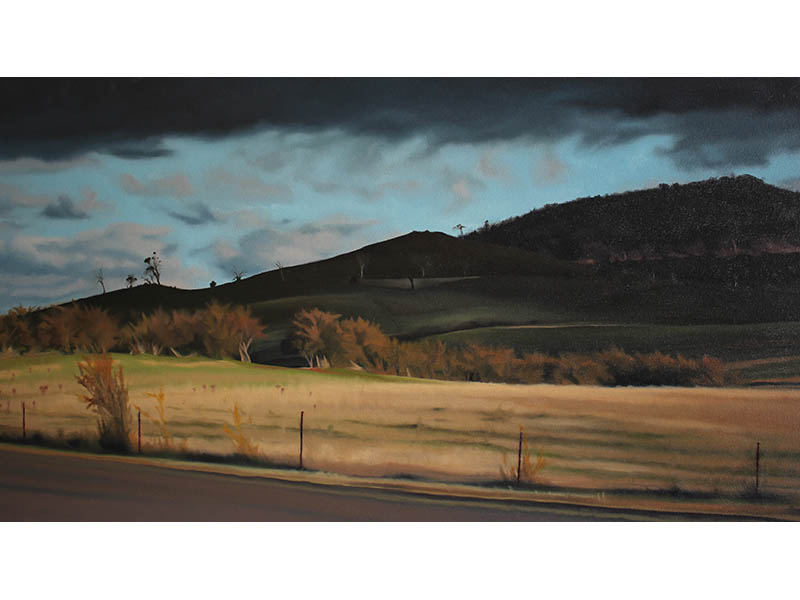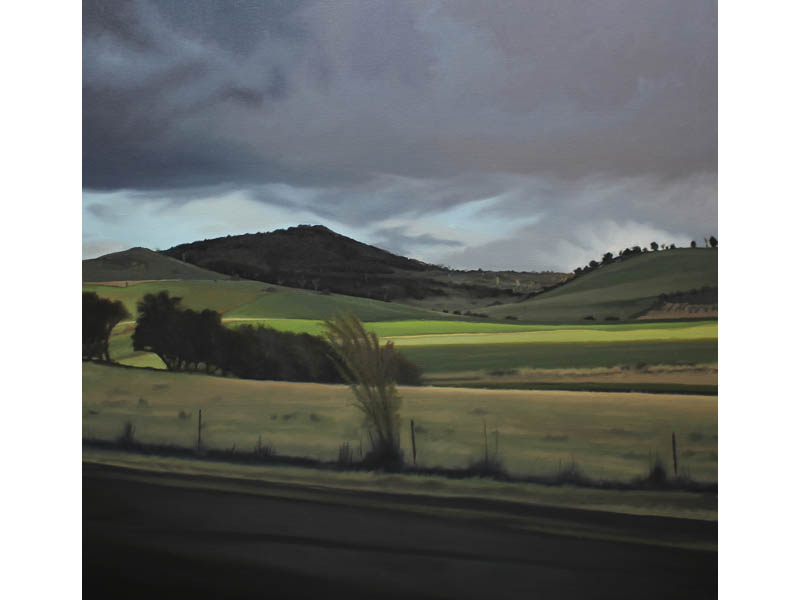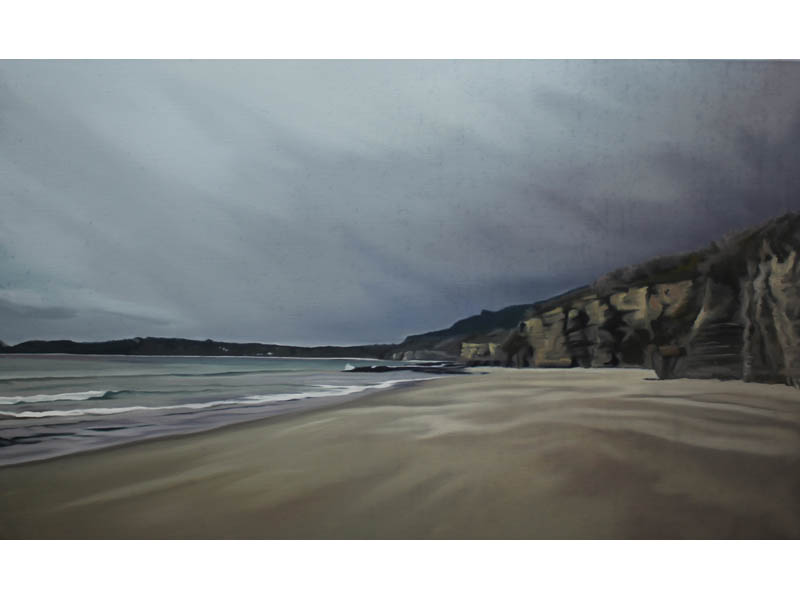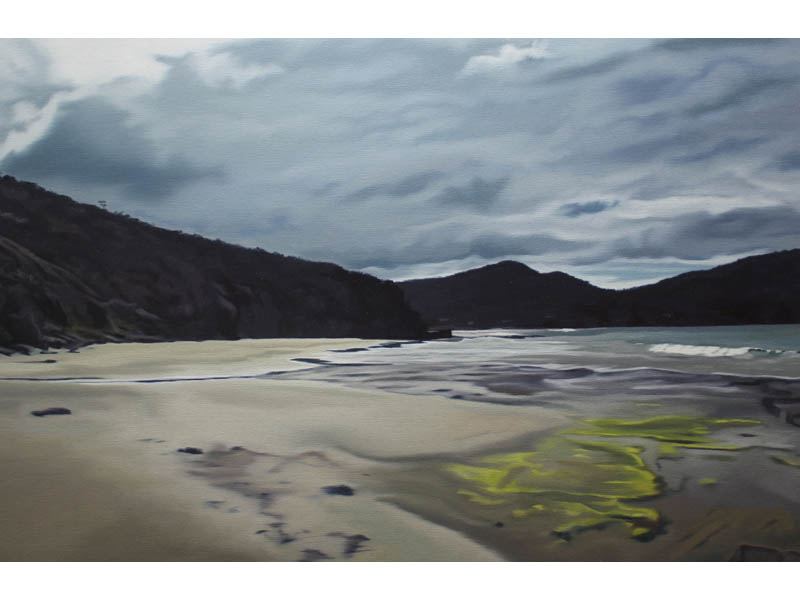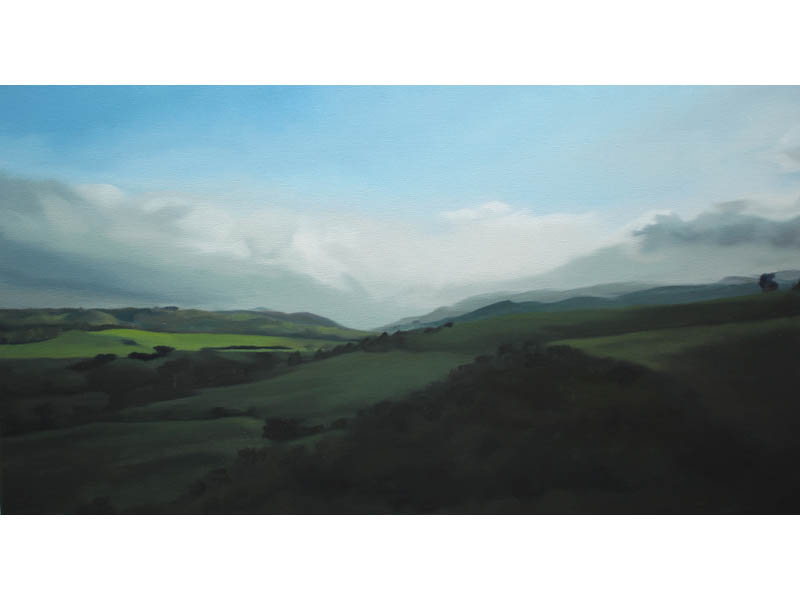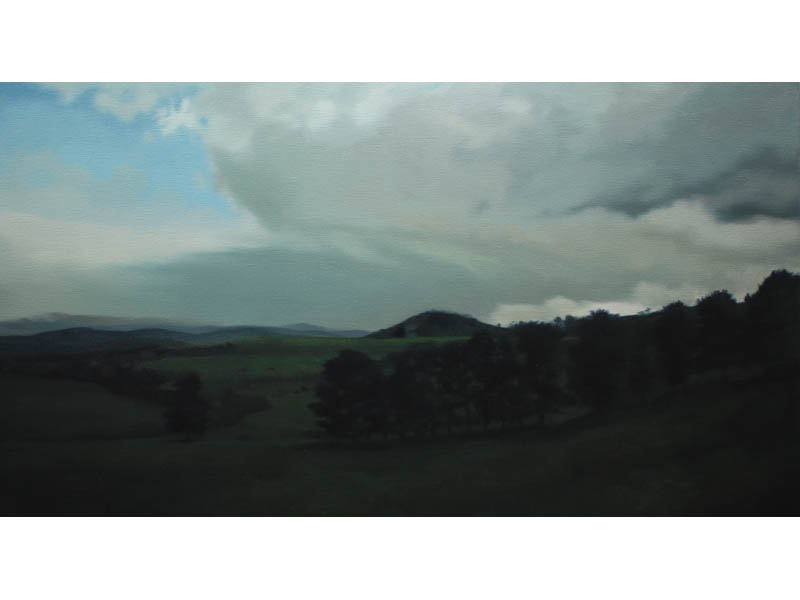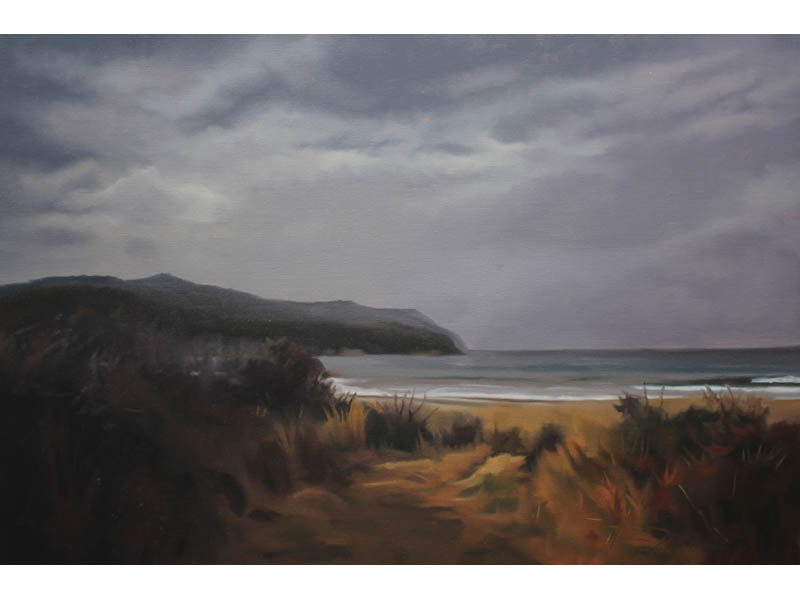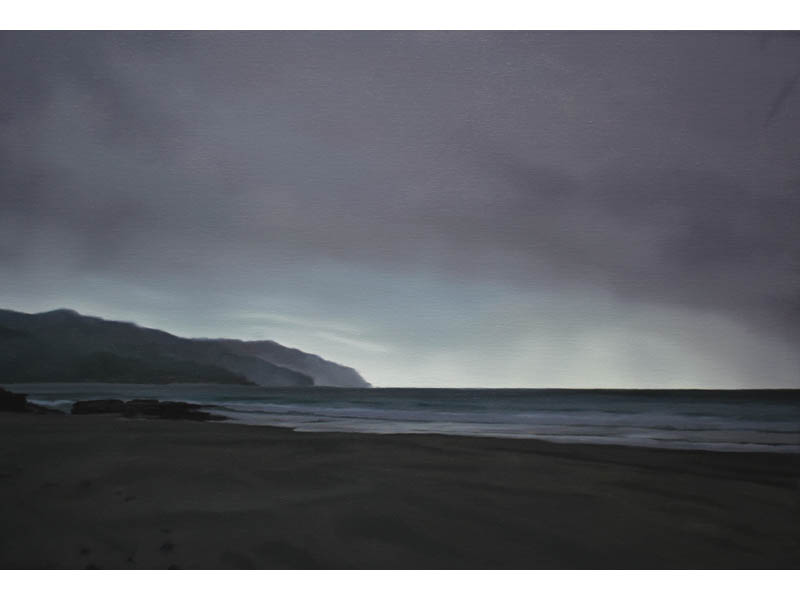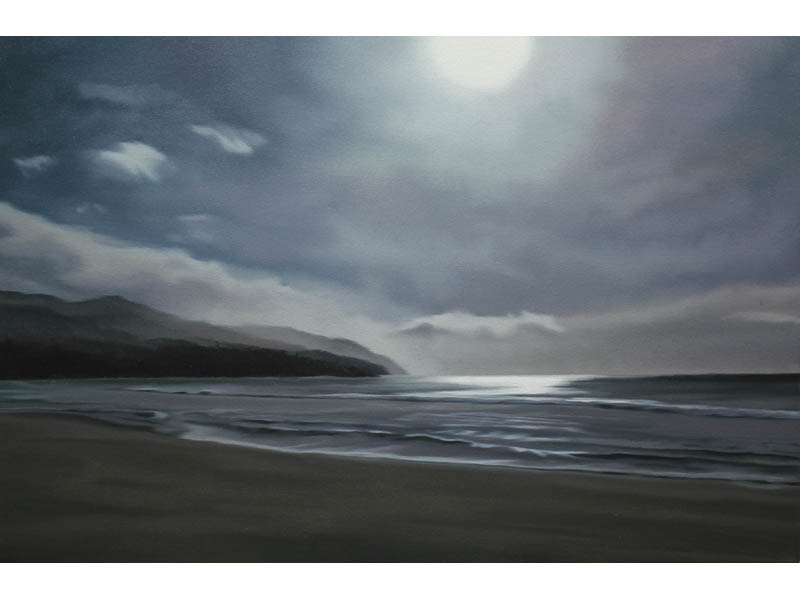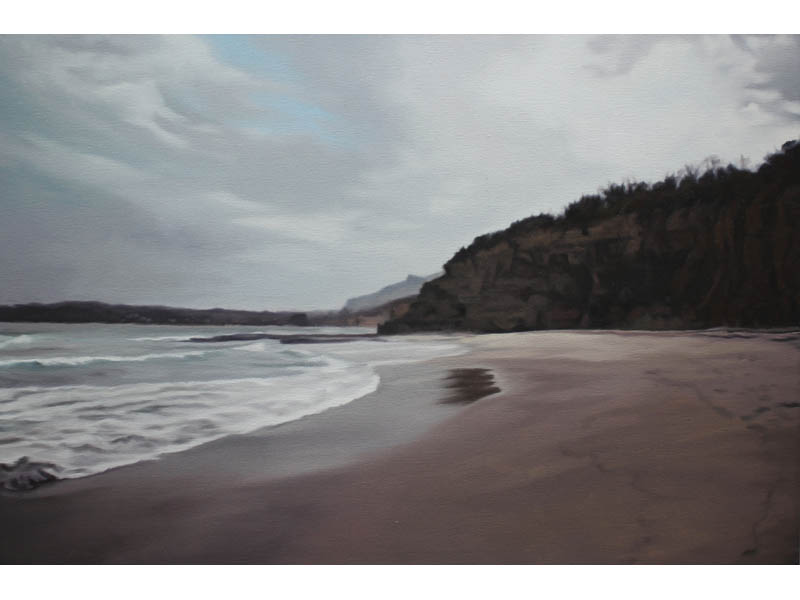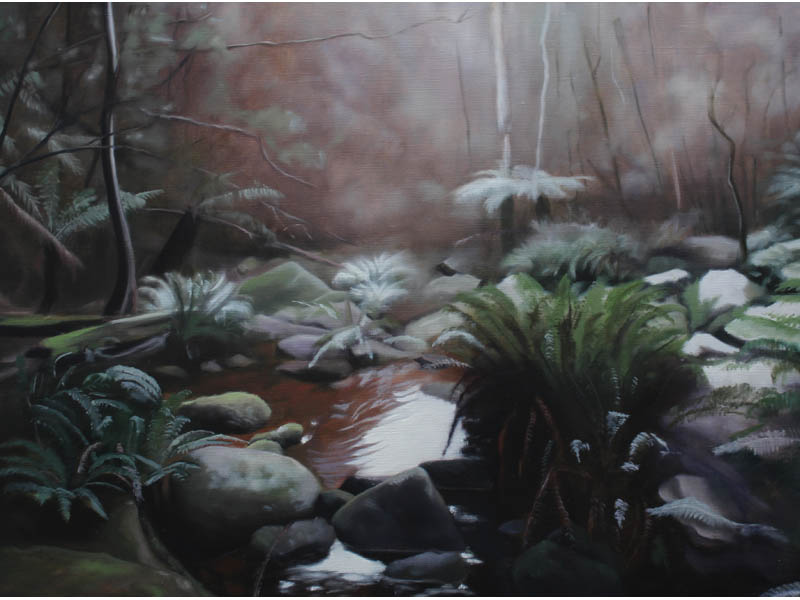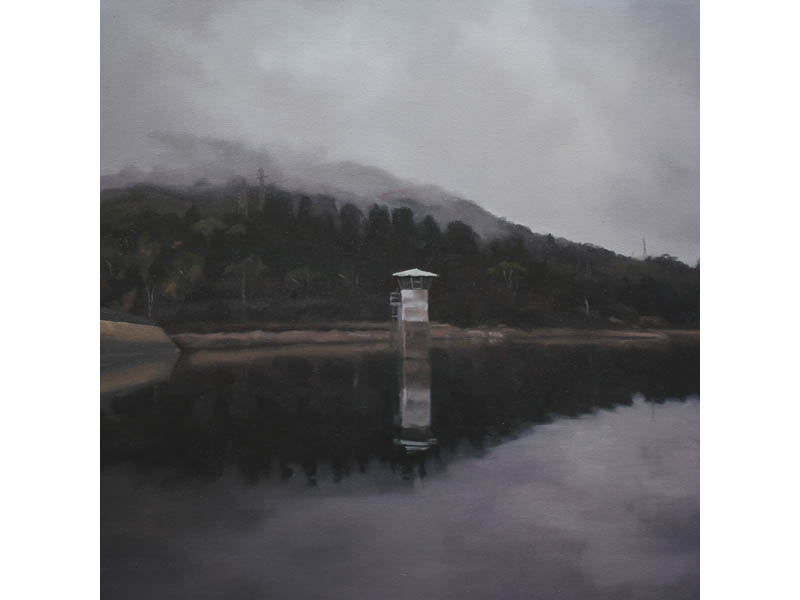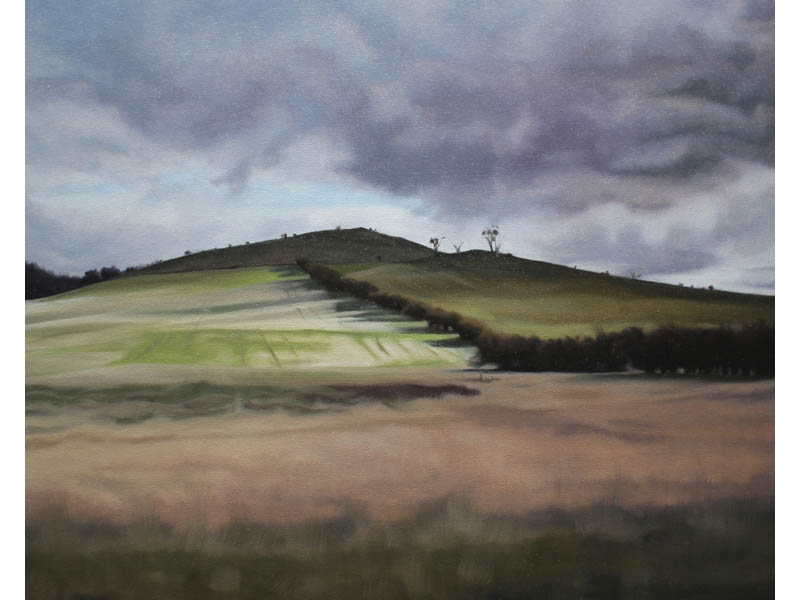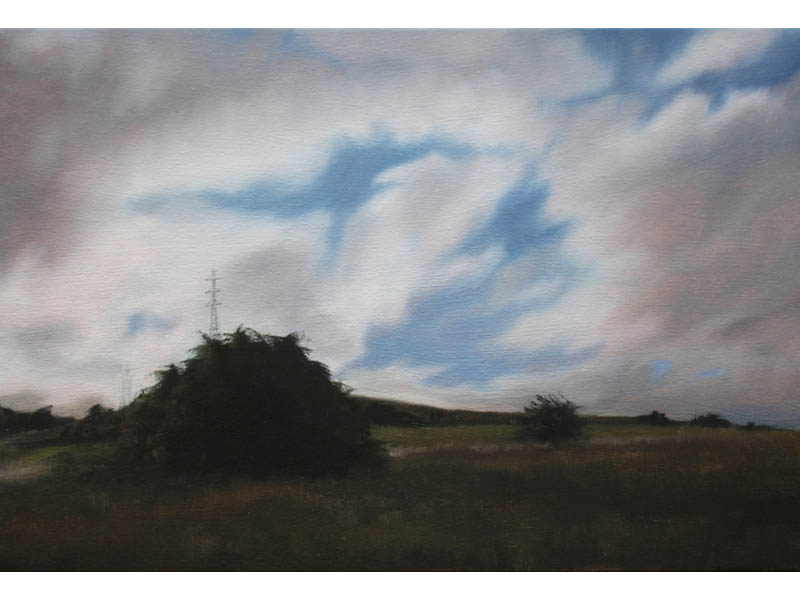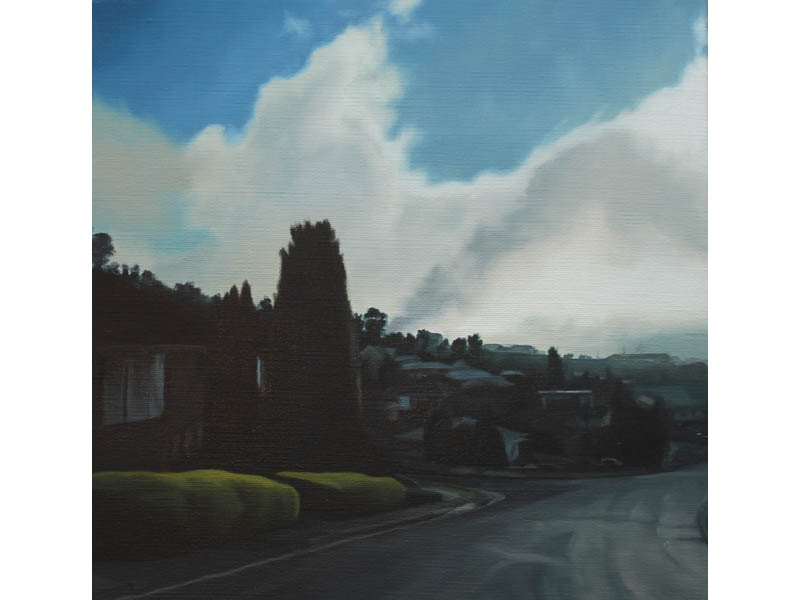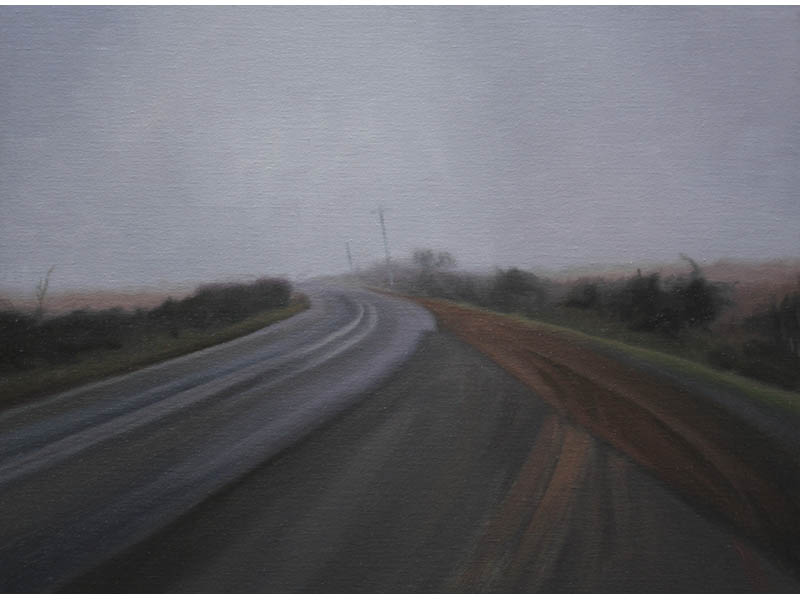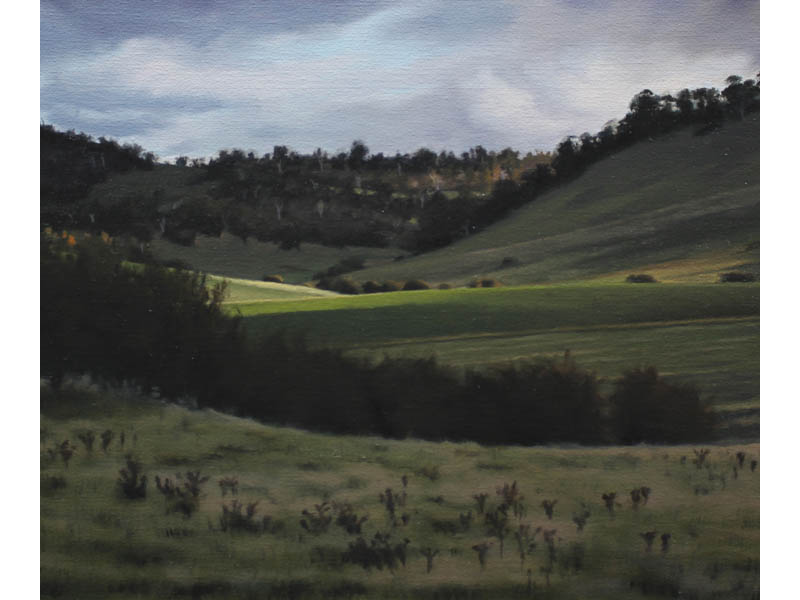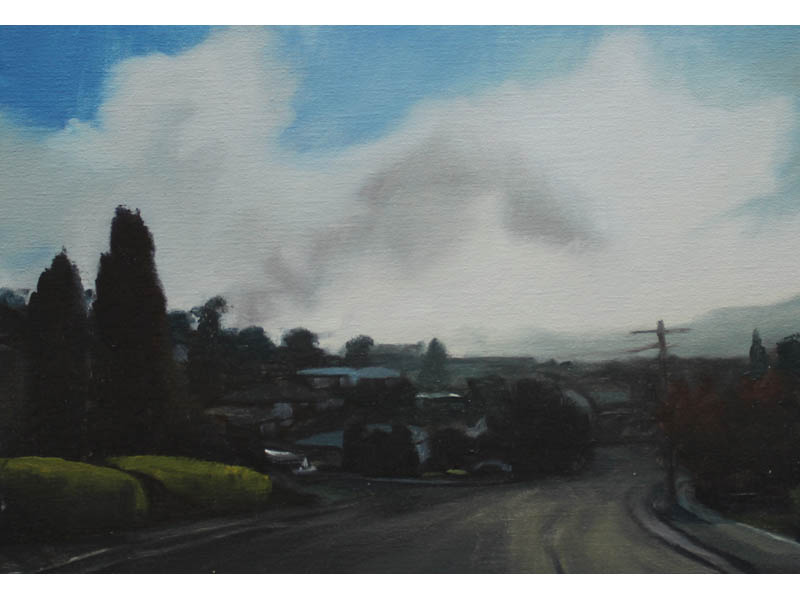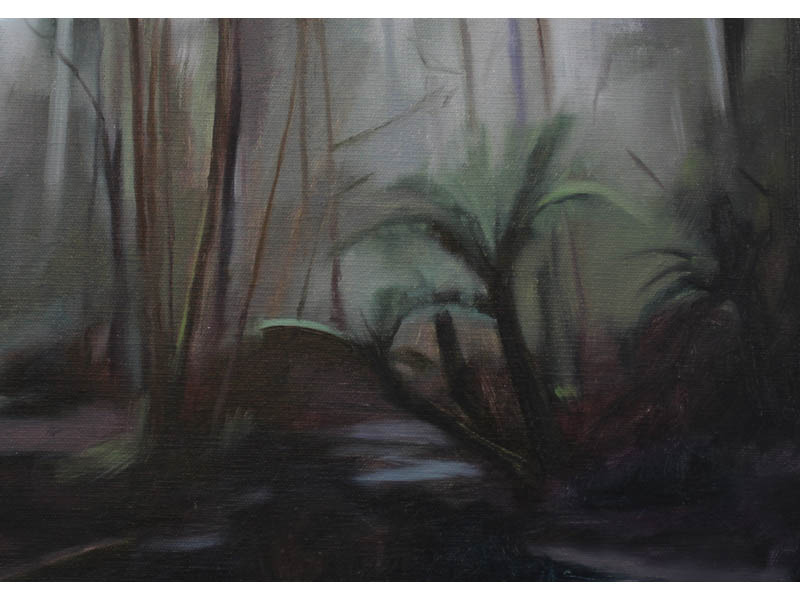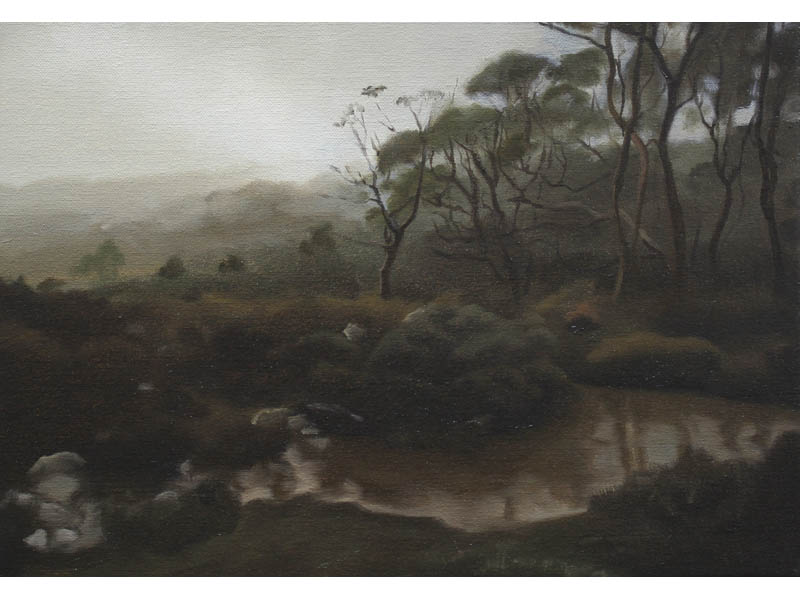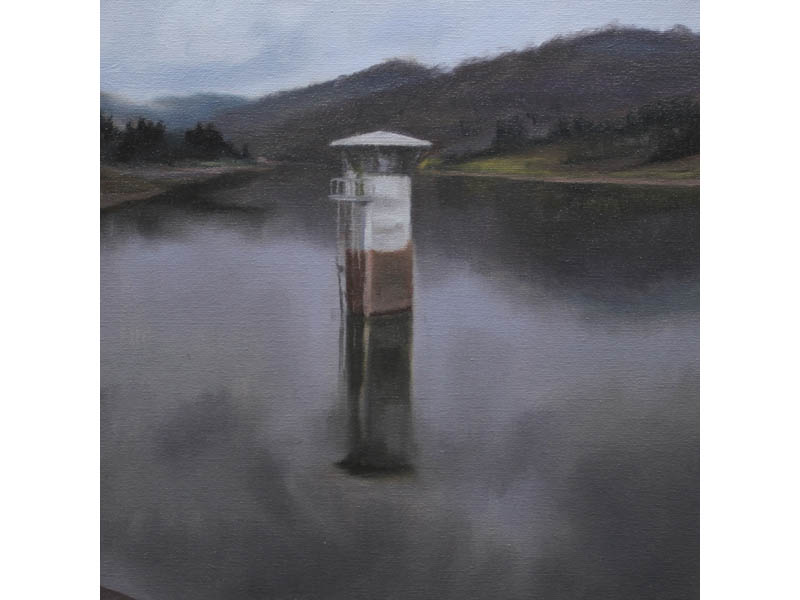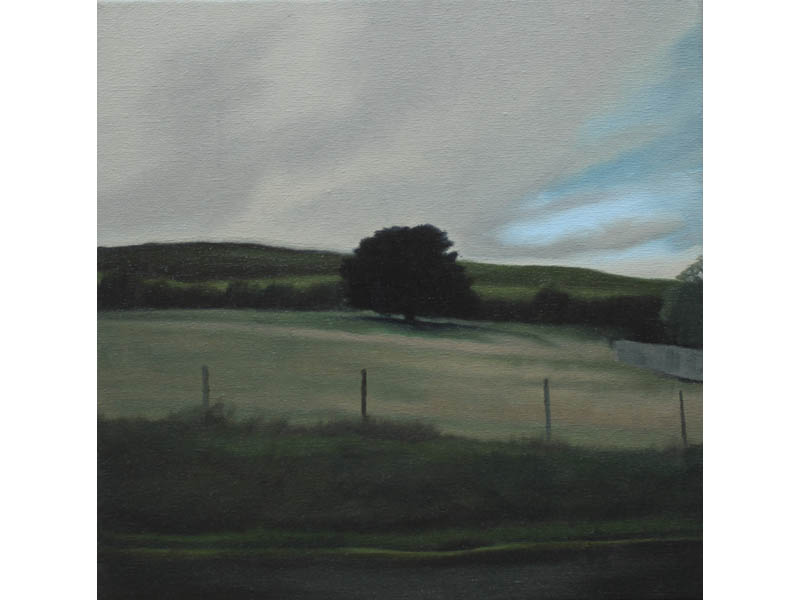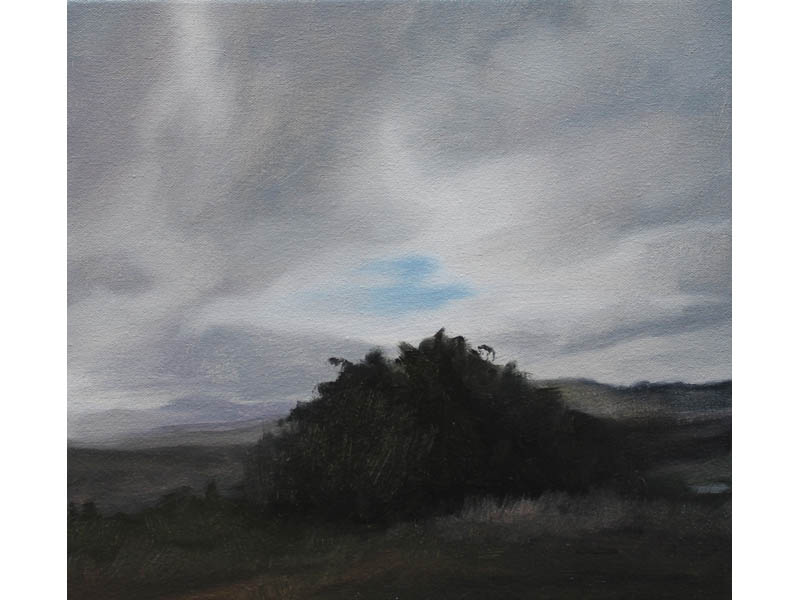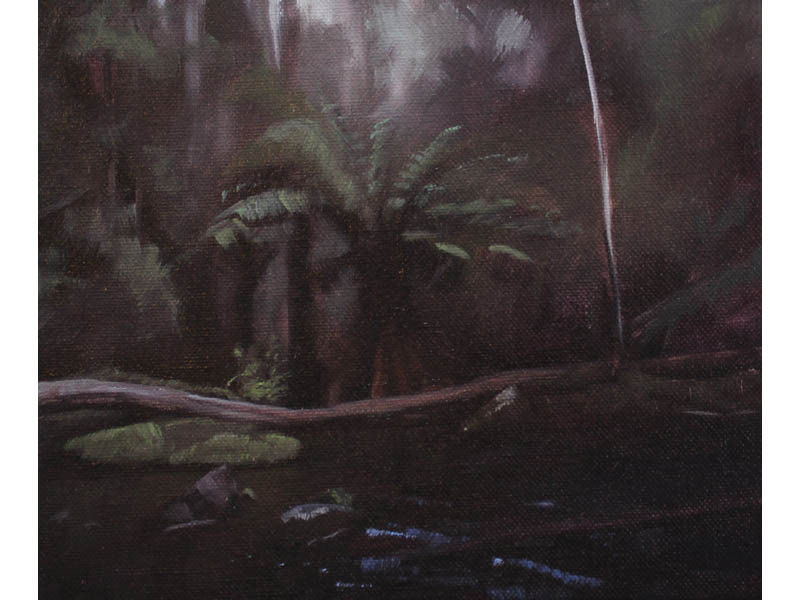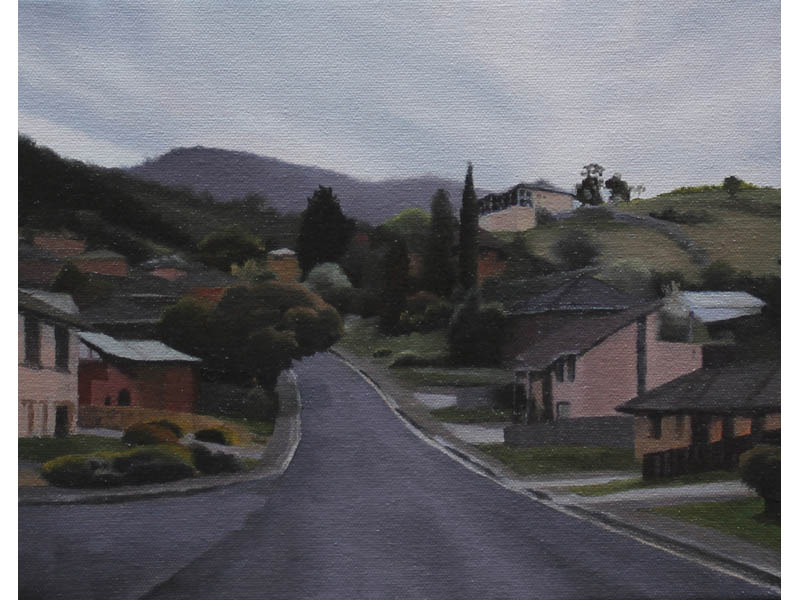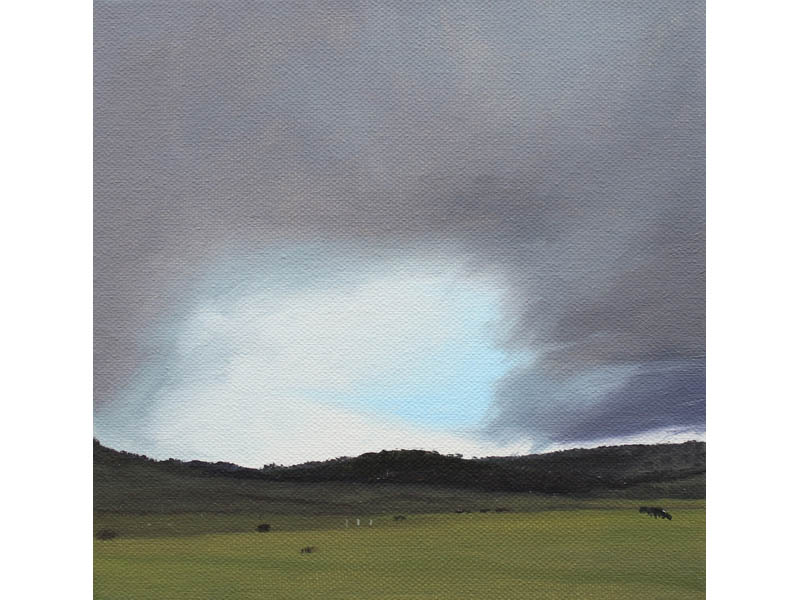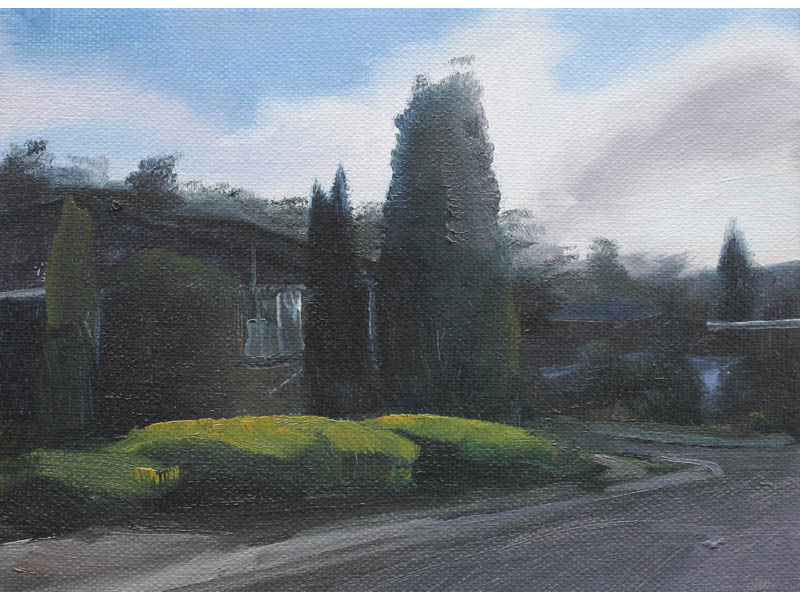Paul GundryThe transposition of the gothic (and the related aesthetic categories of romanticism and the sublime) on to the Tasmanian landscape can be seen and heard in artistic reflections from the earliest days of European settlement. Gothic undertones abound. It is largely as a branch of literary fiction that the common tropes of the gothic are furnished, and for many artists, the Tasmanian scenery - natural, historical, and social – presents itself as uncannily suggestive, and often eerily reminiscent of gothic mood and atmosphere. I have also found myself compelled by the comparisons, and while it is easy to see that a too-eager indulgence of dark, gothic fantasies (to the point of trivialising, and devolving into cliché), a question remains: is the gothic a projection of the European imagination, a fictional account, the product of habit and artifice? Or is it a quality that inheres in the Tasmanian landscape, not produced, but found/discovered - a remarkable simulation, standing in for and displacing the real or the original. And whether or not this intuition of a ‘fake’ reality – nature as an artificial construct, or a phantom - isn’t itself the greater horror – that reality is a copy without an original ala Baudrillard – and other such assertions such as those that issue from the gothic materialism of Mark Fisher, and the speculative realism of Quentin Meillassoux. Cliché, but where cliché takes on the compelling and uncanny spectre of mimetic desire.These landscape paintings picture familiar Tasmanian scenery from the Tasman Peninsula, the Derwent Valley, Suburban Hobart, and Mt Field. They are captured in moments that are, to me, highly particular. There is a lot of waiting involved - waiting for an atmosphere to take hold – waiting for the sound of a passing car to fade into the distance, and leave me – like Frankenstein’s monster – to come out of hiding, and stand by the side of the road, feeling uniquely alone in some of ‘nature’s specially chosen locations’ – both a pleasure and a disquiet. I have not sought to make pictures that are overtly, showily, or unambiguously gothic or ghoulish, but instead provide occasion for the spectre of the gothic to suggest itself, or to quietly emerge in all its contradictory sensations and unknowability – landscapes and atmospheres that subtly allude to gothic potential. Apart from a sense of gothic suggestiveness, I want the pictures to prompt the question of what is given in experience? What is given other than a sense of loneliness and abandonment to a cosmological immensity for whom we are a mere contingency (if we follow Meillasoux’s conclusions). The indeterminacy of the gothic as a category of production and experience that has nonetheless, developed recognisable characteristics – like the atmosphere evoked by ambient composers such as Brian Eno, Robert Rich, Harold Budd, and others – the strangeness of the unknown, and whether it is a dream or a nightmare, joy or despair, and which finds examples in the strangest or least likely places. My sense of the gothic finds some sympathy with Mark Fisher’s accounts of the weird and the eerie. He wrote, “the eerie is an incursion of the unknown into a silence, a gap…” I am also interested in the gothic’s relation to the sublime – a “pleasurable terror”, as Burke described it. The way a calm landscape can oscillate between a state of comfort and reverie, but also a sense of creeping anxiety and gradual unease – and potential terror. The gothic is a category that can greedily engulf and devour all manner of experiences. The title for the exhibition, Gothic Relief, is somewhat tongue in cheek, and perhaps a little ironic, but its ambiguity (a literary characteristic) suggests to me the threat of semiological fatality that hovers within gothic contemplation. And whether this endless deferral of classification and the lack of an interiority isn’t infact the object of the real – the empty kernel which language circles, but never names – and for which all figures of gothic horror are metaphors. The Tasmanian landscape that occasions these sorts and kinds of reflections. Finally, for all this talk of the gothic, I still want to ask whether we can’t take some comfort in the daffodils at the side of the road – what remains for the beautiful in a landscape with a history such as ours. |


